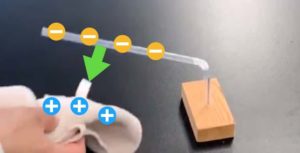Jam’s Secret Ingredient: The Magical Pectin Science on Your Toast!
I’m Ken Kuwako, your Science Trainer, and for me, every day is an experiment!
Why is the jam on your toast so deliciously gooey? 🍓 We just boil down fruit and sugar, so how does that signature “jelly-like” texture appear? The truth is, there’s a magical “scientific trick” hidden inside the fruit itself. This time, we’re diving deep into the secret of how jam sets, and the amazing power of its star player: Pectin!

The Secret Net that Makes Jam “Wiggle and Set”
When making jam, you add a large amount of sugar to the fruit and boil it down. How does that “gooey” and “wobbly” texture come to life? The main character is Pectin, a substance naturally found in the fruit. Pectin is a type of dietary fiber (broadly a kind of sugar) that is especially abundant in the peels of apples and citrus fruits.

A miracle happens when you combine three things while boiling the jam: Pectin, the added sugar, and the acid (tartness) from the fruit. The pectin molecules link together, forming a net-like structure with the help of the sugar and acid. This net traps the water and fruit juice within its mesh. That’s how jam turns into a gel! As you continue to boil it down, water evaporates and the pectin concentration increases, which strengthens this net structure and makes the jam a firm, stable gel.
The Connection Between Pectin and Fluche (Fruiche)
1. The Secret to Fluche Setting
Have you ever had Fluche (a popular Japanese dessert mix)? It thickens right up when you mix it with milk, doesn’t it? Believe it or not, that’s also the power of pectin! The mechanism, however, is a little different from jam. While jam sets with sugar and acid, the pectin used in Fluche is specially modified to react with the calcium found in milk. It’s truly a dessert packed with scientific ingenuity!
2. The “Dietary Fiber” that Supports Gut Health
Another key point is that pectin “cannot be broken down by human digestive enzymes.” You might think, “Can’t be broken down? Does that mean it’s useless to eat?” Not at all! This is precisely why #Pectin is called “Dietary Fiber.”
Though our bodies (digestive enzymes) can’t break it down (digest it), it travels straight to the large intestine where it becomes a feast for the gut bacteria living there. As these bacteria feed on the pectin, they become more active, which helps improve our gut environment and produces beneficial substances for our bodies (such as short-chain fatty acids).
Jam: A Fusion of Science and Health
The jam we casually spread on our toast is a product of a “chemical reaction” that occurs when the dietary fiber called pectin meets sugar and acid inside the fruit. And this same pectin is a reliable ally that contributes not only to deliciousness but also to the health of our gut (gut health activity). The next time you pick up a jar of jam, be sure to remember this little “scientific story”! 🍓
Contact and Requests
Bring the wonder and fun of science closer to you! I’ve put together easy-to-understand explanations of fun science experiments you can do at home and the tricks behind them. Please feel free to search for more! ・The content of my Science Notebook is now a book. Find out more here ・For more about the operator, Ken Kuwako, click here ・For various requests (writing, lectures, science classes, TV supervision, appearances, etc.), click here ・Article updates are posted on X!
![]() The Science Note Channel features experiment videos!
The Science Note Channel features experiment videos!


